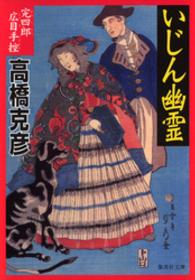- ホーム
- > 洋書
- > 英文書
- > History / World
基本説明
Analyzes what many historians have treated separately - the construction of the Czech and German nations as a larger single phenomenon.
Full Description
In a new perspective on the formation of national identity in Central Europe, Nancy Wingfield analyzes what many historians have treated separately--the construction of the Czech and German nations--as a larger single phenomenon.
Czech and German nationalism worked off each other in dynamic ways. As external conditions changed, Czech and German nationalists found new uses for their pasts and new ways to stage them in public spaces for their ongoing national projects. These grassroots confrontations transformed public culture by reinforcing the centrality of nationality to everyday life and by tying nationalism to the exercise of power. The battles in the public sphere produced a cultural geography of national conflict associated with the unveiling of Joseph II statues that began in 1881, the Badeni Language Ordinances of 1897, the 1905 debate over a Czech-language university in Moravia, and the celebration of the emperor's sixtieth jubilee in 1908. The pattern of impassioned national conflict would be repeated for the duration of the monarchy and persist with even more violence into the First Czechoslovak Republic.
Numerous illustrations show how people absorbed, on many levels, visual clues that shaped how they identified themselves and their groups. This nuanced analysis is a valuable contribution to our understanding of Central European history, nationalism, and the uses of collective memory.
Contents
List of Maps and Illustrations List of Abbreviations Introduction 1. Imagining the Emperor: Statues of Joseph II as Sites of German Identity 2. The Battle Joined: Protesting the Badeni Language Ordinances 3. The Moravians Compromise?: Czechs, Germans, and the Question of a Second Czech University 4. Centers and Peripheries: The Francis Joseph Jubilees 5. National Myths and the Consolidation of the Czechoslovak State 6. Pomp and Circumstances: Commemorations and the Construction of National Memory 7. The Politics of Sound: "Talkies" and Anti-German Demonstrations in Prague 8. The Attempt to Construct a German Community 9. The Politics of Memory in Postwar Czechoslovakia Epilogue Notes Index







